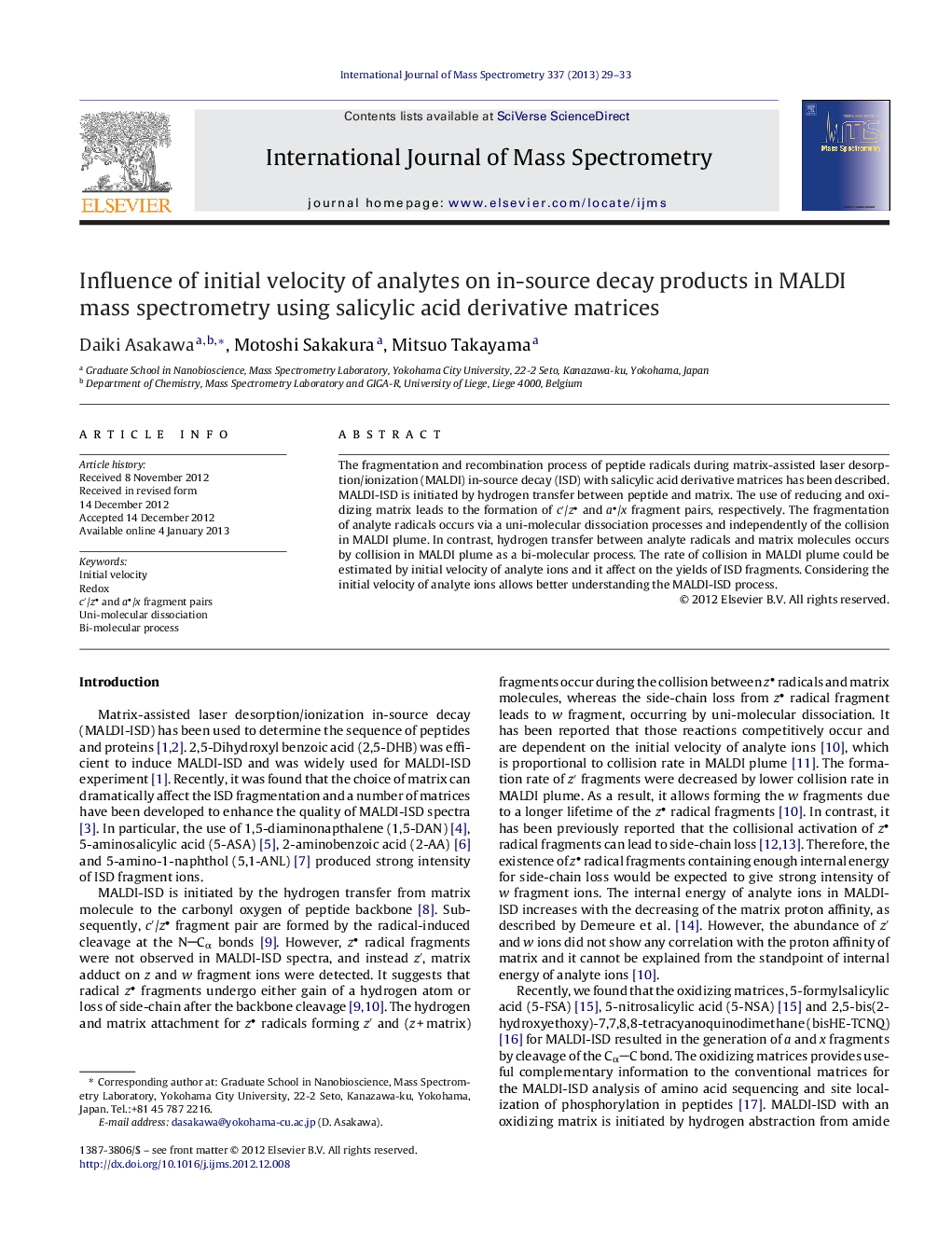| کد مقاله | کد نشریه | سال انتشار | مقاله انگلیسی | نسخه تمام متن |
|---|---|---|---|---|
| 1192623 | 1492283 | 2013 | 5 صفحه PDF | دانلود رایگان |

The fragmentation and recombination process of peptide radicals during matrix-assisted laser desorption/ionization (MALDI) in-source decay (ISD) with salicylic acid derivative matrices has been described. MALDI-ISD is initiated by hydrogen transfer between peptide and matrix. The use of reducing and oxidizing matrix leads to the formation of c′/z and a/x fragment pairs, respectively. The fragmentation of analyte radicals occurs via a uni-molecular dissociation processes and independently of the collision in MALDI plume. In contrast, hydrogen transfer between analyte radicals and matrix molecules occurs by collision in MALDI plume as a bi-molecular process. The rate of collision in MALDI plume could be estimated by initial velocity of analyte ions and it affect on the yields of ISD fragments. Considering the initial velocity of analyte ions allows better understanding the MALDI-ISD process.
Figure optionsDownload high-quality image (153 K)Download as PowerPoint slide
Journal: International Journal of Mass Spectrometry - Volume 337, 1 March 2013, Pages 29–33